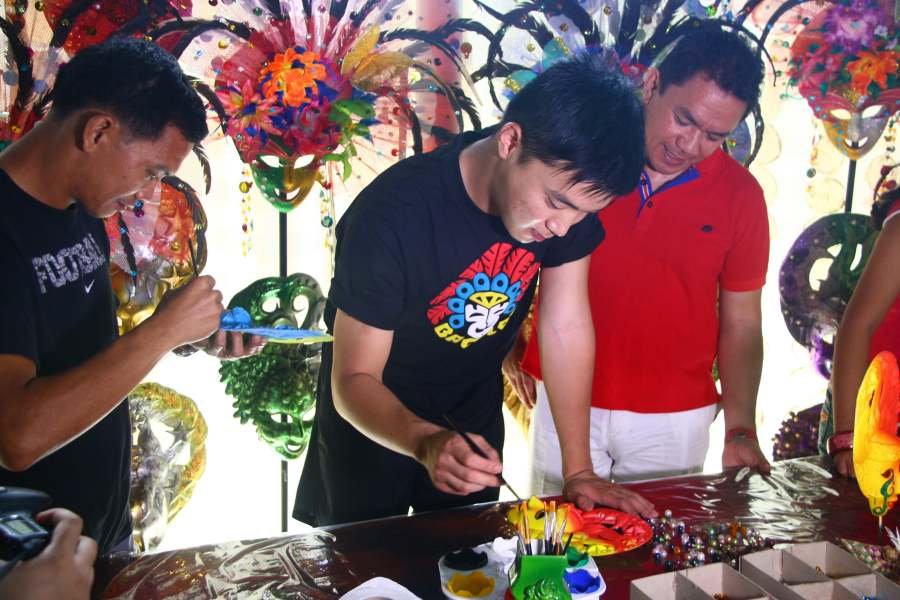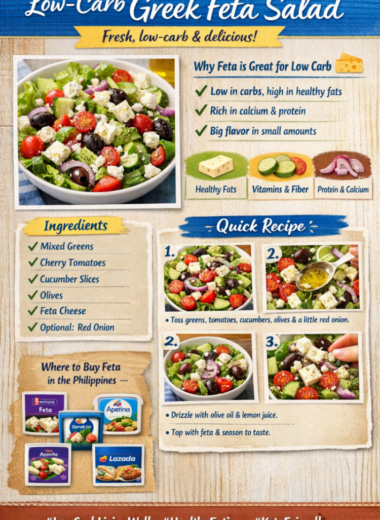New Product Development
Table of Contents
New Product Development in the Light of Design Thinking: My Journey as a Wearable Fiberglass Mask Maker
In the realm of crafting wearable fiberglass masks, each piece is more than just a product; it’s a narrative, an artifact that embodies creativity, culture, and personal touch. My journey into making masks for decor, souvenirs, and parties has been both a profession and a passion, largely guided by the principles of design thinking. This is the story of how empathy, creativity, and an iterative approach have shaped my craft and business, illustrating the powerful impact of design thinking in new product development.

The Genesis: Empathizing with My Audience [ New Product Development ]
In the context of new product development through the lens of design thinking, my venture commenced with a keen observation at a local carnival. Amidst the vibrant chaos, I discerned a distinct gap: the absence of personalized, durable, and aesthetically pleasing masks that could serve as both wearable art and cherished keepsakes. This realization spurred me to delve deeper, not merely to understand the market demand, but to grasp the emotional resonance such masks could evoke.
For months, I immersed myself in various events, engaging with attendees, vendors, and organizers to glean insights into their desires and preferences regarding these unique pieces of art. Every conversation and observation became a source of inspiration, shaping the foundation of my designs. The goal was clear: each mask should transcend being a mere object, becoming a tangible reflection of the wearer’s persona and the essence of the event it adorned. This empathetic approach, rooted in design thinking, ensured that my masks resonated deeply with their intended audience, embodying not just artistic expression but also meaningful connections.

Defining the Challenge [New Product Development ]
Armed with insights, the challenge was clear: to create masks that transcended the traditional, offering both a high-quality, wearable product and a memorable souvenir. This dual purpose meant balancing durability with design, and functionality with flair. Each mask had to be a standalone piece of art yet comfortable and adaptable to various face shapes and event themes. This challenge framed my project, guiding every decision from conceptualization to completion.

Ideating: Unleashing Creativity [ New Product Development ]
With a problem defined, the ideation phase was exhilarating. I drew inspiration from a plethora of sources: history, mythology, modern art, and even the natural world. Sketching became a daily ritual, with each design aiming to capture an emotion, a story, or a moment in time. This phase was marked by wild creativity, where feasibility took a backseat to imagination. Yet, it was also a period of learning to let go, as not every idea that sparkled on paper held up under the scrutiny of practicality and user needs.

Prototyping: Bringing Ideas to Life [ New Product Development ]
Prototyping was where my ideas confronted reality. Transforming sketches into tangible masks involved a delicate dance of techniques and materials. Working with fiberglass allowed for durability and intricate designs but demanded precision and patience. The prototypes were rough, often too heavy or rigid. Yet, with each iteration, they evolved, becoming lighter, more adaptable, and closer to the vision I had set out to realize. This phase was a testament to the power of perseverance and the importance of embracing failure as a step towards success.

Testing and Feedback: A Cycle of Learning [ New Product Development ]
Testing my masks was as much about technical durability as it was about aesthetic appeal and comfort. I held small focus groups, inviting feedback on everything from the fit to the feel of the material against the skin. Watching someone try on a mask for the first time was always a moment of truth. It was here that I learned the importance of adjustable straps, padding, and even the distribution of weight. Each piece of feedback was a gift, guiding further iterations and refining my designs to better meet my users’ needs and desires.

Evaluating Success and Embracing Iteration [ New Product Development ]
The true test of any product comes post-launch. As my masks found their way into the world, I stayed connected with my customers, eager to hear their stories. Some masks became centerpieces in homes, others stars of local festivals. Each review and photograph shared was not just a testament to the mask’s success but a beacon guiding future designs. The design thinking process never truly ends; with each batch of masks, I find myself back at the drawing board, armed with new insights and ready to tackle new challenges.

[ New Product Development ]
Reflections and Looking Forward
Reflecting on the journey of my wearable fiberglass mask business, its success is not just a testament to creativity and craftsmanship but also to the principles that have guided us from conception to the hands of our delighted customers. Here are the core reasons behind our success, along with tips for aspiring entrepreneurs looking to make their mark in the world of product design and beyond.

[ New Product Development ]
- Deep Market Understanding
- Why It Worked: Our initial deep dive into understanding the desires and frustrations of our potential customers set a solid foundation. This empathetic approach ensured our products not only met but exceeded expectations, creating a loyal customer base eager for our next creations.
- Tip for Readers: Start with empathy. Understand the heart and soul of your market. Listen more than you speak, and let the insights guide your innovation.

2. Commitment to Quality and Innovation
- Why It Worked: We never compromised on the quality of materials or the ingenuity of our designs. Each mask is a testament to our commitment to offering something unique and durable, standing out in a market saturated with disposable items.
- Tip for Readers: Let quality be your hallmark. In a world where so much feels transient and disposable, quality craftsmanship and innovative design can create an enduring legacy.

[ New Product Development ]
3. Building a Brand Story
- Why It Worked: Our masks are more than just products; they’re carriers of stories and tradition, modern artifacts that embody the essence of the occasions they’re part of. This narrative approach to our brand has resonated deeply with our audience, allowing us to stand out in a meaningful way.
- Tip for Readers: Craft your brand story with intention. People connect with stories more than products. Let your story be authentic, compelling, and reflective of the values and experiences your audience cherishes.

[ New Product Development ]
4. Leveraging Feedback Loops
- Why It Worked: The iterative nature of our design process, fueled by constant feedback, has been pivotal. It’s allowed us to refine and evolve our offerings in real-time, staying ahead of trends and aligned with our customers’ evolving needs.
- Tip for Readers: Embrace feedback as a gift. Create channels to receive it, both positive and negative, and use it as a guiding light for continuous improvement and innovation.

[ New Product Development ]
5. Sustainable Growth
- Why It Worked: Our growth strategy has always been measured and intentional, prioritizing sustainable practices and mindful expansion over rapid scale. This approach has ensured that we maintain the quality and uniqueness of our masks, even as we reach more customers.
- Tip for Readers: Grow at your own pace. In the rush to scale, don’t lose sight of what makes your product special. Sustainable growth often means taking the time to make strategic decisions that align with your long-term vision.

Conclusion and Inspiration
The journey of our mask business is a living narrative of how empathy, quality, storytelling, feedback, and sustainability can come together to create a successful product and brand. To those embarking on their entrepreneurial journey or nurturing a nascent idea, let our story be a reminder: success is multifaceted. It’s not just about having a groundbreaking idea but about how you develop, present, and evolve that idea in harmony with your audience’s desires and the world’s changing needs.
Let this be your inspiration: with the right approach, grounded in design thinking and a deep connection with your market, you can create something truly memorable and successful. Whether it’s wearable art or another passion project, the world awaits your unique contributions.

[ New Product Development ]
More Stories
- Building a Website for Your Small Business
- Yam Khang/ Fire Massage ,Thai Culture at Ban Rai Kong Khing, Chiang Mai
- Wat Rong Khun/White Temple: Unveiling the Ethereal Beauty of Chiang Rai
- Niludhan Falls in Bayawan, Negros Oriental | Travel Guide
- Hunasan Seafood House, Bacolod City | A Review
- Netong’s Original La Paz Batchoy : A Review
- Managerial Development Course | MRM Group of Companies
- Baga 6100 , Bacolod City : Smoked and Grilled Restaurant
- Negros Power Joins Forum on Power Security, Reliability in Negros














The empathise phase of design thinking helps teams build a deep understanding of their users, promoting empathy as a key driver in the design process.Empathy is crucial to design thinking because it allows designers to set aside your assumptions about the world and gain insight into users and their needs. Understanding the perspectives and emotions of users to design solutions that resonate with them.Through empathy, we are able to put ourselves in other people’s connect with how they might be feeling about their problem, circumstance, or situation.
Design thinking principles, such as empathy and iterative feedback, ensure that the products are not only functional but also based on the emotions of the buyer. The user can also be based on their needs and how they understand the products. It can also create a meaningful design of the products, like our cultures and our surroundings. The design makes the user calm, peaceful, and appreciative while looking at the products.
Design thinking principles, including empathy and iterative feedback, are crucial for creating products that not only meet functional needs but also resonate emotionally with users. Empathy involves understanding users’ needs and pain points, allowing designers to uncover insights not found through traditional market research. Iterative feedback allows designers to refine their designs based on user input, addressing evolving needs and preferences. This combination leads to more satisfying user experiences, increased engagement, loyalty, and advocacy, contributing to product success and long-term sustainability.
Design thinking emphasizes emphathy allowing designers to understand user’s needs, emotions and pain points. By engaging with users early, teams can gather insights beyond functionality, creating intuitive and personal products. Iterative feedback strengthenes this process allowing for continuous testing and refinement. This approach builds an emotional connection and ensures functional accuracy. As design undergo multiple iterations, the product becomes refined and enjoyable for users.
Empathy, for example, is a key principle of design thinking that is essential in product development because it facilitates an understanding of more than just the practical use of a product by its customer. This perspective empowers designers to relate with users’ emotions, preferences and frustrations in order to create interface experiences that directly resonate with them. However, iterative feedback means that the product is tested and improved over and over so that it changes as the result of feedback. Combined, these two principles make it possible to build products that essentially function as they are expected to but are also felt at an emotional level by the target consumers.
The principles of design thinking, such as empathy and iterative feedback, are essential for creating products that connect emotionally with users. Empathy helps ensure the product meets users’ needs and experiences, turning it into something significant rather than just a simple item. Continuous feedback improves the product by addressing both practical and emotional aspects, leading to better overall quality. This method builds a strong bond between the product and its users, increasing their satisfaction and involvement.
The principles of design thinking, such as empathy and iterative feedback, contribute to the development of a product that not only meets functional requirements but also resonates emotionally with its users is that, it can help you to create more innovative product, understand your customers or the users and uncovering deeper insights to create new ideas to your product. Through design thinking such as empathy it allows you to understand the customers, perspective, emotions and build connection on what they might feel about your product. It is important that you know about what they might feel about your products and to understand how they will use your products because it allows you to understand their needs, so that you can provide them with an appropriate solution, it can benefit them, and you can save time and money to your products. Additionally, with the iterative feedback it allows you to improve or ameliorate your products based on the feedback or information you receive from the customers or users. Overall, it is important to know the customers feelings and feedback because you will learn and understand what they like about your products and the areas that you need to improve so that, you can save your time, money and can save you from any unsatisfactory and humiliation from your customers.
I believed that the principles of design thinking help the user to externalize research and create a shared, better understanding to deal with good decisions. Moreover, it is important to understand their perspective, needs, and motivation. Aside from that, the principles of design thinking, such as empathy and iterative feedback, play a very important role in developing a product because these are functionally effective and emotionally resonant. Integrating empathy and interactive feedback into the design process not only ensures the product meets functional requirements but also enhances their emotional impact. Lastly, these approaches lead to more meaningful and successful user experiences.
Design thinking is also a way we can make a lot of customers, by making our product appealing to the eyes their eyes. Design thinking also helps producers juiced out ideas from their head. In design thinking we have now created a connections between our buyers/ users that will help us understand their needs and improve our products.
The principles of design thinking can heavily contribute to the development of a product. Because through empathy will you be able to feel or experience how the customers perceive your products. And with iterative feedback will you be able to know the discomfort of customers towards your product and then will you be able to improve in terms of quality, comfortability, and overall marketability of your products. that is how I believe the principles of design thinking can contribute to the development of a product.
Serg Kenneth A. Pelagio BAMK-2C
The principle of design thinking, such as empathy and iterative feedback, contribute to the development of a product because by having these it understands and it connect with your market. By understanding and connecting with your user, it creates a relationship that can be a good foundation for loyalty. Also, by receiving critique and feedbacks from customers still enhances your connection and also it is your room for improvement. Having these design thinking contributes to a development of a good product.
The principles of design thinking also focuses on Empathy and Iterative feedback which are critical factors when designing an innovative product as it is made to engage with users. One has to learn about the needs and feelings of their target consumers and customers in order to create not only useful, but also appealing and accessible solutions. Ideas can be tested and refined using feedback received from the users. This is very effective because it increases the chances that the product being created is something they would like to have or something that they only need to use.
Design thinking emphasizes understanding users and having creative problem solving abilities. Two important principles – empathy and iterative feedback – are crucial in crafting products that work well and foster emotional connections with the people who use them.
Empathy
• User Research: Start knowing your users by doing interviews or observing them. That way you will come to learn their needs, frustrations as well as desires.
• Creating Personas: Build personas that embody all your target customers; therefore it will be easier for you to design bearing their experiences in mind.
• Emotional Connection: Use stories to showcase user experiences based on pain points making them relate better with those solutions provided.
Iterative Feedback
• Prototyping: Construct fast prototypes that are of low fidelity so as to examine ideas without making great investment.
• User Testing: Collect feedback from users at different phases of development process so as see how they interact with it and what feelings it brings forth.
• Refinement: Constantly refining the design based on user input ensures meeting of user expectations and emotional needs more closely with product creation.
Emotional Design
• Aesthetic Appeal: Visual design matters, colors and shapes can induce certain feelings which enhance user attraction.
• Intuitive Use: Make it simple yet enjoyable thus reducing frustration while increasing satisfaction.
White Lace Lamp where it looks aesthetic
Design thinking uses empathy to understand users emotions and needs and creating products that connect with people. Empathy allows designers to deeply understand the users needs and desires, enabling the creation of products that go beyond just functionality to form a meaningful connection with users. Through iterative feedback, designers can refine the product to incorporate in users to judge at each stage. This ensures the product not only meets at their requirements but also evolves in a better alignment with users expectations and also satisfy them in this product.
Design thinking principles like empathy and iterative feedback help create products that are functional and emotionally engaging. Empathy allows designers to deeply understand user needs, resulting in human-centric solutions that feel intuitive and meaningful. Iterative feedback enables continuous refinement based on real user input, enhancing both usability and emotional resonance. This approach helps build trust, personalize experiences, and create a strong emotional connection with users. Overall, design thinking ensures products solve real problems while also fostering deeper user loyalty and satisfaction.
For my comment the Design thinking principles like empathy and iterative feedback ensure that a product is deeply aligned with user needs and emotions, well because it has a meaning not just its functional requirements. By prioritizing empathy, it can genuinely understand user important points and desires, creating a solutions that feel personal and relevant for the people. Iterative feedback allows for continuous refinement based on real user reactions, helping the product evolve in a way that strengthens its emotional impact for the people. These cycles of understanding and improvement lead to a product that users feel connected to and valued by making it more likely to succeed and be cherished and love. Ultimately, this human centered approach builds not like just a product but an experience that resonates on a deeper level.
Empathy feedback can help especially to the people who are working in that specific job. It can help the person improve, learn, and grow. Iteration feedback can help make changes or adjustments on the product based on the feedback. It contributes to the people in the company to strive more and be better towards their work.
As artistic entrepreneurs, our clients and customers are always our number 1 priority, whom we listen to what they have to say as well as provide them with what they need. Being empathetic towards your audience by learning their preferences, the issues they face, and communicating and immersing yourself with them, as well as gathering information from them can help us be more knowledgeable about what they are looking for in a product, this, in turn, influences how we create and modify our goods and/or services. On the other hand, keeping in mind necessary feedbacks, constructive criticisms and noting suggestions from people who have tried your offer can lead your product to a path of improvement once you have integrated the crucial developments in it. For a product to be attractive and perceived to be of good quality to a potential or existing client, it must have features that the said customer can resonate with and can have a connection with, something that not only provides functionality but a sense of belongingness to the client as well. With that being said, we can conclude that through empathy and consistent feedback, we can achieve a goal of providing the clients an offer that will not only be of good use and function but can also be a reflection and resonance of what our clients want and who our clients are.
VIA MARIE HULLEZA
BAMK 2C
Empathy and iterative feedback are two design thinking tenets essential to developing products that transcend mere usefulness and establish profound emotional bonds with people. In order to ensure that the product connects on a personal level, designers must prioritize empathy to genuinely understand and satisfy the consumer’s wants, desires, and emotions. Continuous improvement is made possible by iterative feedback, which brings the product closer to the expectations and experiences of its users. Users get a sense of co-creation from this process, which makes them feel appreciated and understood. In the end, design thinking makes it possible to create goods that are meaningful in addition to being practical, which increases consumer loyalty and happiness.
Kshatria Belicena BAMK 2-C September 4, 2024 (9:45pm)
As mentioned in the blog, the designer felt empathetic towards the consumers because the market seemed to lack a balance between beauty and practicality. With this in mind, they took it upon themselves to spend hours and hours on designing and protoyping products (particularly masks) that are functional but still aesthetically pleasing. Along with this comes iterative feedback wherein the process involved gathering information from people to ensure its quality. Both empathy and iterative feedback play such a big role in developing a product that not only serves its purpose, but touches the hearts of the consumers by creating a positive emotional connection with them.
Alekzya Amber Estrebillo BAMK 2-C T/TH 3:30 – 4:30
For me, empathy and iterative feedback is really important when it comes to designing or creating a product. The feedback of the customers or buyers is a big factor for an artist to improve not only the quality and also the looks of your product. Also, it is important that the products that you’re selling is functional, aesthetic, and durable. Applying all of these can be a big help whenever you are creating a product so that the buyers or customers will be satisfied and will be your regular buyers.
I think design thinking has a big impact on making products that work well and connect with people, It focuses on understanding users and getting feedback, It also gets to know what users need for designers to find insights to guide them in creating solutions that matter. The process of getting feedback again and again helps make the product better based on how real people use it, like how designers need to understand how customers appreciate their products on what they are selling. And does this make sure the product matches what users want? When these two put things together, the products are not just easy to use but also form a bond with users. Lastly, design thinking helps create products that help the people who use them with appreciation and satisfaction.
Mary Rejen M. Navarte BAMK2-C
The principles of design thinking, such as empathy and iterative feedback, help to contribute to the development of a product through understanding what the customer needs and hearing experiences from your product. Empathizing helps understand what’s going on in the market. It understands the problem and also connects emotionally to the consumer to fill the void of what they need. In iterative feedback, it is important because, as a seller, the experiences of the customer within the product are very essential. It helps the seller to identify the gaps, lapses, and what things need to improve or innovate. Hence, these two are connected in making product development. We need to hear our customers voices, their wants, and their needs. Overall, the principle of empathy and iteration helps refine and meets more than customers expectations and is a way to connect or build relationships with our customers.
In your blog insight, focus on how design thinking guided your journey in developing a wearable fiberglass mask. Highlight the key stages: empathizing with users’ needs, defining the problem, brainstorming innovative solutions, prototyping, and refining the design through testing. Conclude by noting how this approach led to a successful product and influenced your problem-solving skills in product management.
Lea Rose Tausa
TTH 3:30-4:30